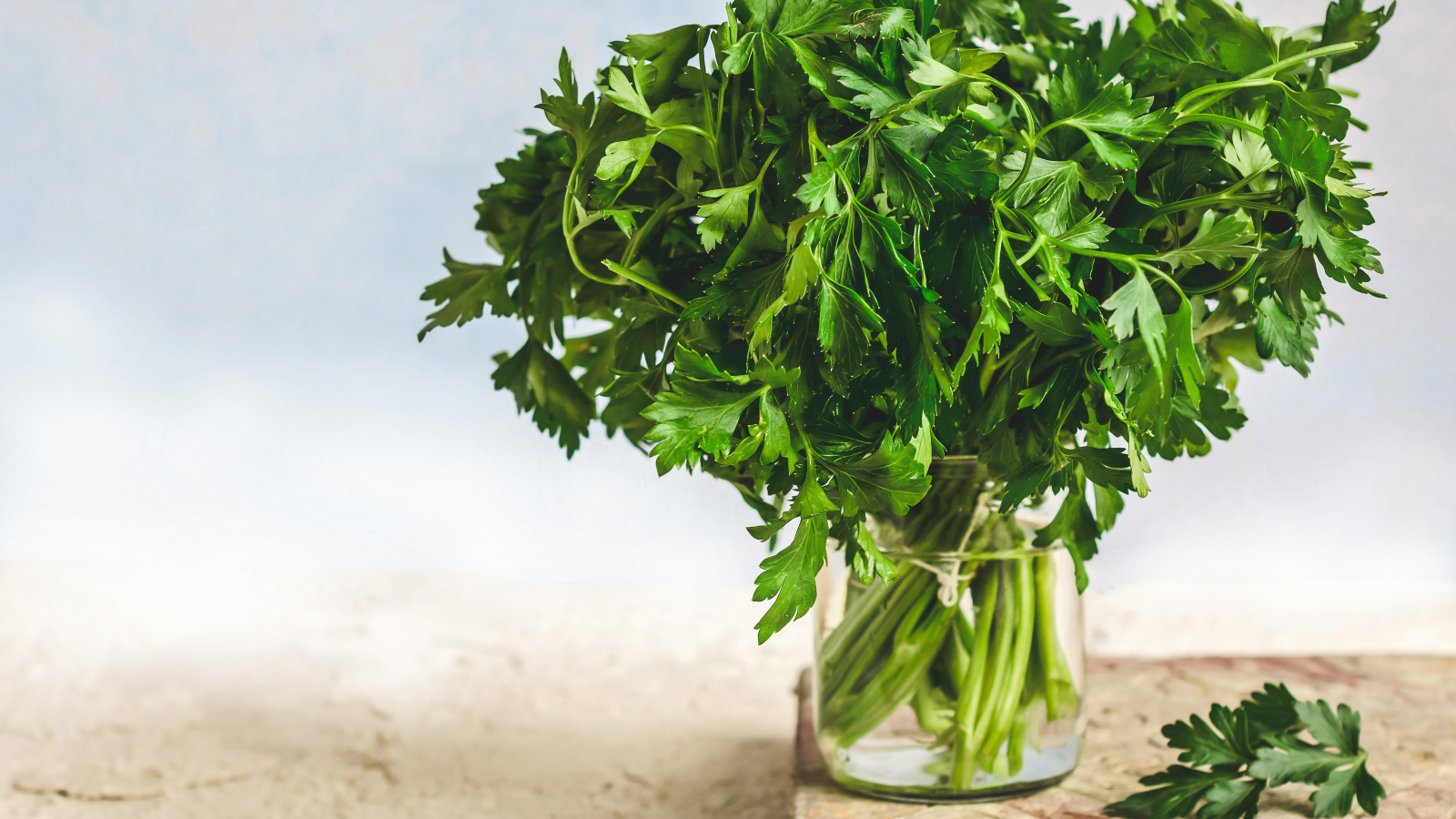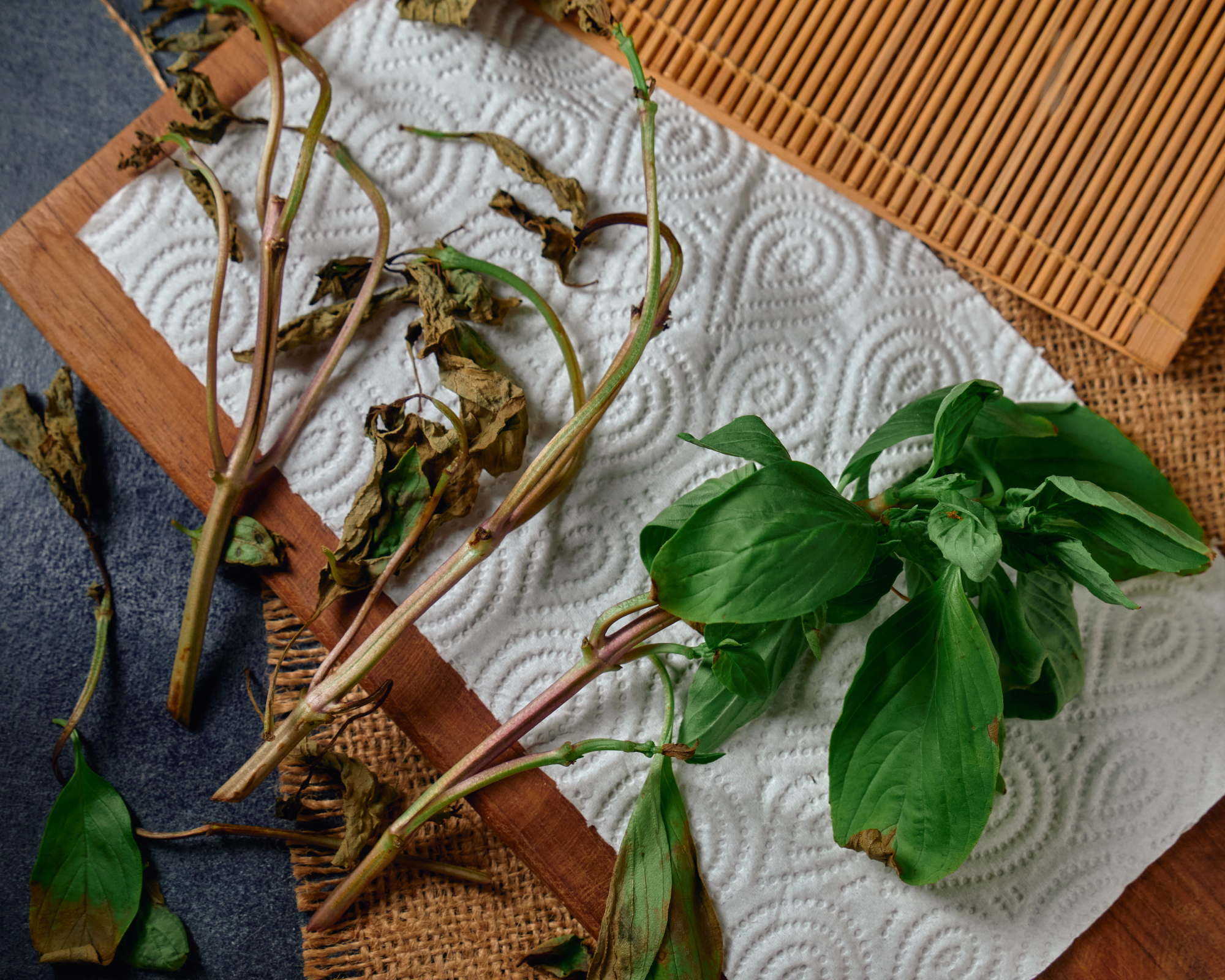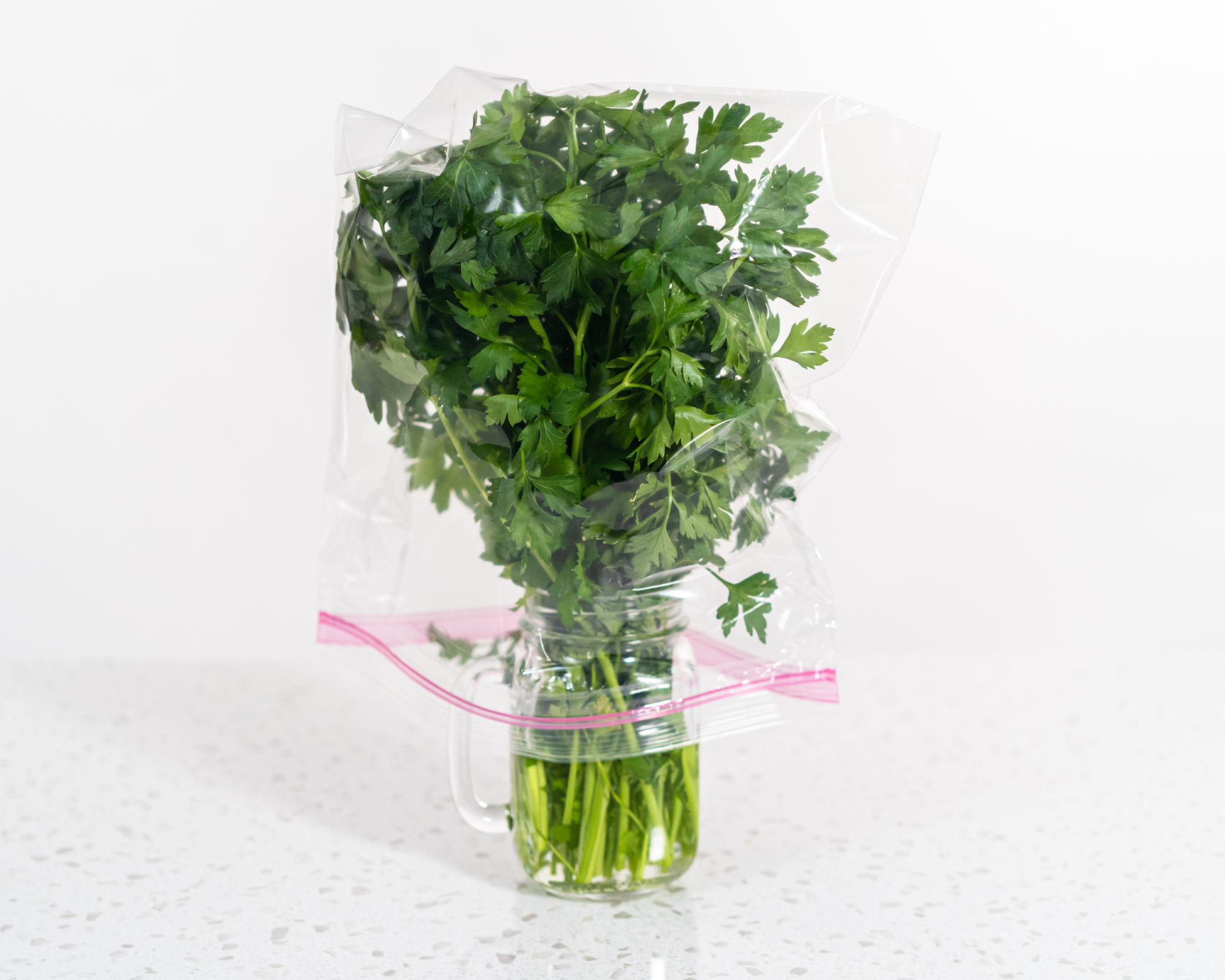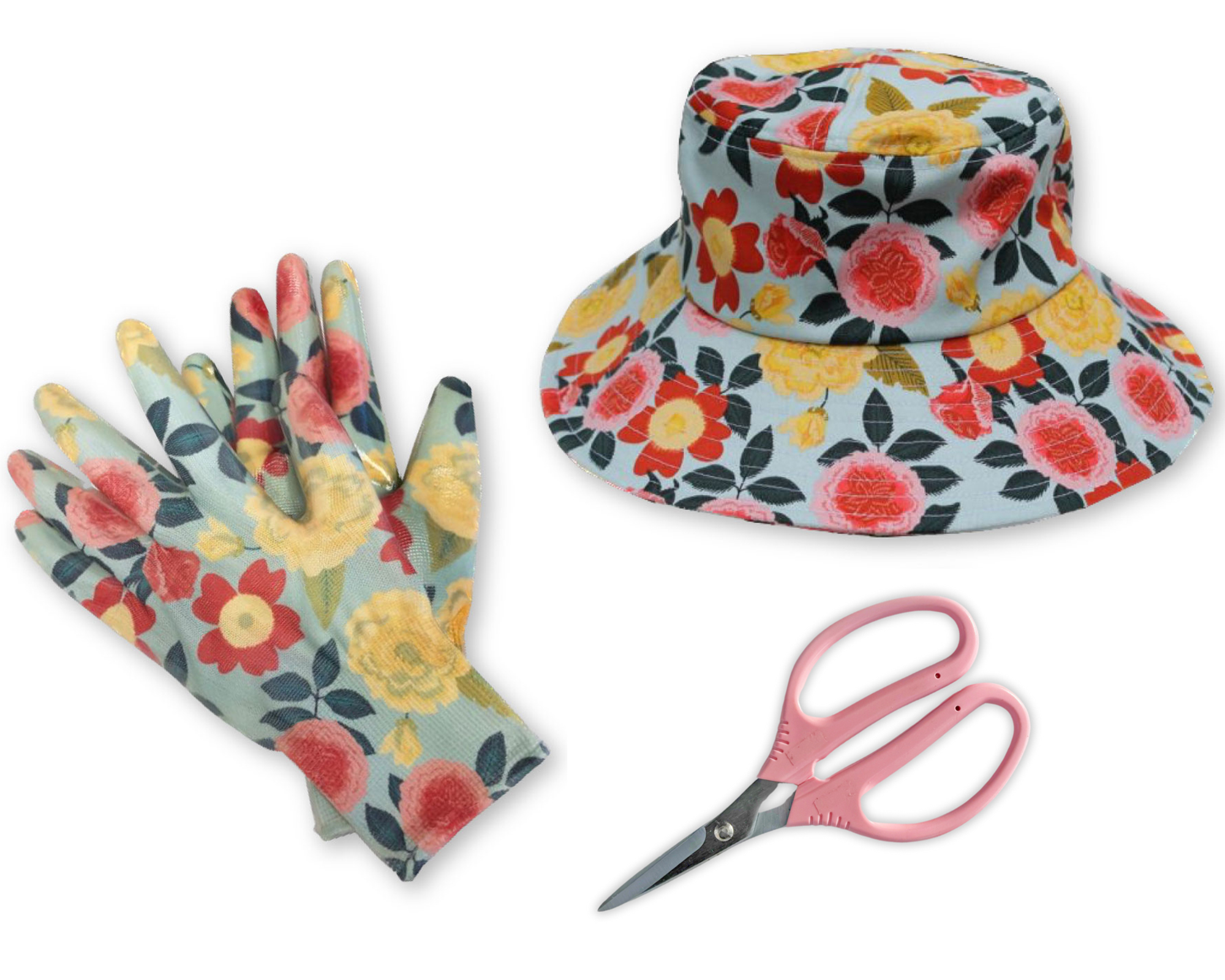How To Store Fresh Herbs From The Garden: Best Methods To Maximize Shelf Life
So you've grown delicious and fragrant herbs in your garden, now what? Learn the best way to store your fresh herbs so you can enjoy your success longer!

Amy Draiss

While it’s possible to dry or even freeze fresh herbs for later use, they’re always much more piquant when used fresh, which makes one wonder how to keep herbs fresh?
Some herbs are resilient, but others are tender and have a short shelf life. After harvesting herbs, storing them properly will extend the life of both varieties.
If you prefer to use your garden (or store bought) herbs fresh, keep reading to learn how to store fresh herbs.
How Long Do Fresh Herbs Last?
An herb garden is a beautiful thing. Herbs are quick to grow and taste amazing when picked fresh. They are perfect for even the laziest, busiest, or greenest gardener.
How long fresh herbs last really depends on two things: the type of herb and how you are storing it. To this end, it’s important to know what type of herb you’re dealing with. Herbs are loosely divided into two categories: warm weather and cool weather herbs.
Warm weather herbs, or woody herbs, primarily hail from the arid Mediterranean. They generally have woody stems, pungent aromas and are perennials.
Cool weather herbs, or tender herbs, thrive in cooler, more temperate environments than their warm weather cousins. They have tender green stems and are often annuals although there are some exceptions.
Sign up for the Gardening Know How newsletter today and receive a free copy of our e-book "How to Grow Delicious Tomatoes".
Harvesting Herbs So They Last Longer

While fresh herb storage is important to making these culinary plants last longer, how you harvest them is almost as important.
First you want to harvest herbs at their peak, before they go to bloom. Once they bloom, the herbs lose their flavorful aromatic oils which are responsible for their delightful flavor.
It doesn't matter if you have been growing herbs in containers or in the ground, harvest methods remain the same. Harvest herbs in the morning when their flavor is at its peak, the dew has dried and prior to the heat of the day.
Use sharp clean shears to snip leaves off at the node, or leaf set. Leave some foliage to allow for continued growth; never remove more than 1/3rd of the plant. You can also choose to remove the entire plant if you don’t want or care about further growth. You may also use your fingers to pinch off tender leaves like basil.
Different herbs have somewhat different harvesting methods. Chives can be cut to just a half inch from the ground. Cilantro, dill, and parsley should be cut from the outside to allow the tender young shoots on the interior to keep growing. Cut the top off of sage herbs to promote growth, or just harvest the largest, more mature leaves and leave the others to continue to grow.
What To Avoid When Storing Fresh Herbs

So how do you store herbs to keep them fresh longer? To figure that out, it’s a good idea to know what to avoid when storing fresh herbs.
Avoid excess anything. Excess moisture, light, or exposure to the air. These will all cause herbs to break down faster. Lack of moisture will also cut the herbs usage time by desiccating the leaves.
Temperature fluxes will also shorten the life of fresh herbs. For instance most fresh herbs should be stored in the fridge (with the exception of basil), but the back of the fridge often gets too cold, bordering on freezing which will kill off your herbs.
The last item is contentious. Washing your herbs. I am not a fan of washing herbs before storing them. When you wash them you invariably bruise the leaves which yes, smells lovely, but also opens the foliage up to any bacteria.
Plus, washing herbs doesn’t sterilize them, they still have bacteria growth, you’re just removing the worst of it while losing some of those precious essential oils responsible for all that good flavor.
Best Methods For Storing Fresh Herbs

There are many methods touted as the best for storing fresh herbs. Many people store their herbs wrapped up in either a wet or dry paper towel inside a plastic zipper baggie on a shelf of the fridge. Still others toss the herbs in a plastic bag then put it in the crisper of their refrigerator.
Other folks place their herbs, cut ends down, into a mason or other jar filled slightly with water. Some people cover the herbs while others do not.
I think the last method works the best for tender leafy herbs. I put my freshly cut herbs in a glass filled slightly with water into the refrigerator, attempting to keep it at the forefront and away from the colder back reaches.
I've found a better yet similar method is, instead of a jar or glass, I often use a tall plastic container with a lid. Fill the bottom with water and place the cut ends of the herb down into it. Gently tuck the green foliage into the container and seal it with the lid. No spills and the herbs will stay good for weeks.
For hardier herbs like rosemary or thyme, I wrap lightly in a damp paper towel, place inside a plastic bag and refrigerate; usually in my crisper.
Basil is a bit of a wild card. While it may seem hardy it has delicate leaves that bruise easily, so If I am taking an entire stem of the plant, I place it in a bit of water and store it out of the sun on the kitchen counter.
Frequently Asked Questions
Can I freeze fresh cut herbs?
Yes, you can freeze fresh cut herbs. I find that they lose their potency somewhat when frozen, particularly after a few months. The easiest way is to lay a single layer of herb leaves out on a cooking sheet to freeze. Once frozen, store the frozen leaves inside a sealed plastic container. You can also herbs up and freeze them or mix them into oil or butter to be frozen.
How do you store fresh basil and parsley?
Store basil like fresh flowers, in a glass of water at room temperature. Wrap parsley in a damp paper towel and place it inside a sealed plastic bag inside the fridge.

Amy Grant has been gardening for 30 years and writing for 15. A professional chef and caterer, Amy's area of expertise is culinary gardening.
- Amy DraissDigital Community Manager
